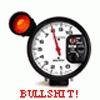Plenums and runner tube length?
Announcements
-
Similar Content
-
Latest Posts
-
So.... the K&N air box thingo was too big, ended up gifting it to a mate, well, by gifting it he actually supplied food and beer at the pub, which was nice, as it will not sit on a shelf in the garage for the next 10 years I did trim up some of the existing stuff to neaten it all up and gave it some wrinkle paint, unfortunately it currently has a used and abused mish mash of different types of hose clamps, 4 big fat T bolt type (shit), and a few normal clamps of vairing sizes and brands, but..... only until the 6 constant tension black worm clamps that I ordered from EFI solutions turn up next week Currently the current hose clamps are triggering me hard, LOL Is this the final version, probably not, I really want just 2 silicone pieces, a straight bit of silicone from the filter to the MAF is easy and will happen as soon as I head into Just Jap tomorrow, the problematic part is a 30° silicone bend from the MAF to the TB that I can connect the engine breather from the head, I found that there are bulk head fittings for boat bilge pumps that should work, but until I can get a 30° silicone bend the alloy pipe, and the 11ty thousand hose clamps, are there for the foreseeable future 4 hose clamps are golden, 6 are grudgingly acceptable, the 8 currently holding it all together is just taking the piss I've also ordered 60 more retaining wall blocks for the front yard, I mis-gonculated the height that was required to get above the base of the Photinia's (red robin's) that are the hedge behind the front fence, currently it is 2 blocks high, and about 1/2 a block short, so going 3 blocks high will be above the base of the red robin's, and allow some room for mulch
-
By GabsReDeal · Posted
It is the stock air box with the panel filter. Everything else is stock except the exhaust at this point, as I also went back to the cleaned 270cc injectors. I will check the RPM when the IACV is unplugged and report back. -
By joshuaho96 · Posted
As MBS suggested if this is happening when the engine is cold you're going to want to remove the intake air regulator and verify resistance + that the shutter is physically opening and closing. At -20C should be fully open, 20C half open, over 60C fully closed. At 20C should be 70-80 ohms. For AAC valve testing using a Consult cable see if you can raise and lower the idle by commanding more or less AAC duty cycle. Hopefully it's pretty linear as well, shouldn't be like 30% AAC valve is barely idling and 40% is 1500 rpm. -
Not sure yet. Was considering speedtek because it was rated to 800hp, but when I did some research about him I don't think I will go for that🤣 So maybe giken gear set, but I'm afraid it won't be strong enough🙄
-



1.thumb.png.36afd656b26d55f5d425fc76e21561f2.png)




Recommended Posts
Create an account or sign in to comment
You need to be a member in order to leave a comment
Create an account
Sign up for a new account in our community. It's easy!
Register a new accountSign in
Already have an account? Sign in here.
Sign In Now